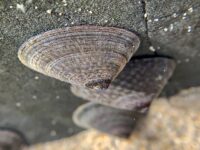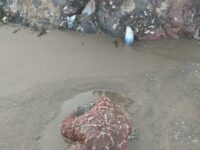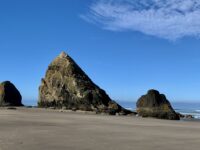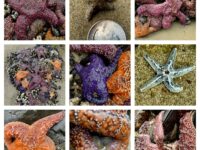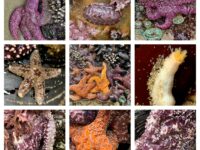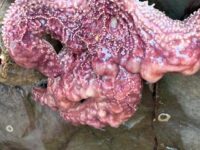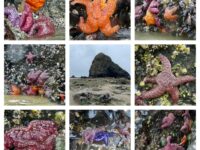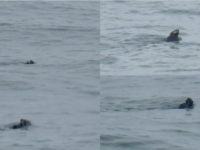Mile 311 Report
Jockey Cap, Silver Pt, S Cannon Beach, Tolovana Beach
August 14, 2022
Today, we observed a total of 896 Ochre sea stars (Pisaster ochraceus) at the northern rocky outcroppings exposed by the low tides at Silver Point.
Report Details
Today, we observed a total of 896 Ochre sea stars (Pisaster ochraceus) at the northern rocky outcroppings exposed by the low tides at Silver Point. We had 10 team members participate for 1.4 hours for a total survey effort of 14 hours. These efforts involved visually inspecting the stars for signs of sea star wasting syndrome (SSWS) as part of our observational study. A total of 765 stars were healthy (85.4%), 112 individuals had one white lesion on the ray or central disk (mild SSWS; 12.5%), while 19 individuals had more than one lesion, arm curling, body disintegration, or organs emerging from body cavity (severe SSWS; 2.12%). We sent images to MARINe who confirmed our correct designations of mild vs. severe disease category symptoms. Size class measurements ranged from the minute 5mm to a dinner plate sized 270mm, measured from the center of the central disk to the longest ray. No stars were touched in this observation (visual inspection only). Of the healthy individuals counted, 718 individuals measured between 30-170mm in terms of size class designations, which is 80% of all healthy Pisaster measured. Many juvenile stars were observed, especially in the crevices of California mussels along the rock wall of Silver Point rock. Additional tidepool invertebrates seen today included two tar-spot sea cucumbers associating with California Mussels and on an Ochre sea star, green spongy cushion (Codium setchellii), Hairy chiton, Hind's chiton, Monterey Dorid nudibranch, and Striped dogwinkle eggs. Inside of, and in the tidepools in the immediate vicinity of, the sea cave at Silver Point at extreme low tide, we observed a Pile worm, Button Shell, Common rock louse, Striped shore crab, Flat porcelain crab, and Pacific Hairy Hermit crab. Many curious visitors were delighted to be able to walk through the sea cave given the high level of sand deposited and save access at low tide.
Conditions
Temperature: 70 F. Cloud Cover: Sunny. Tide Level: 0.2 feet.
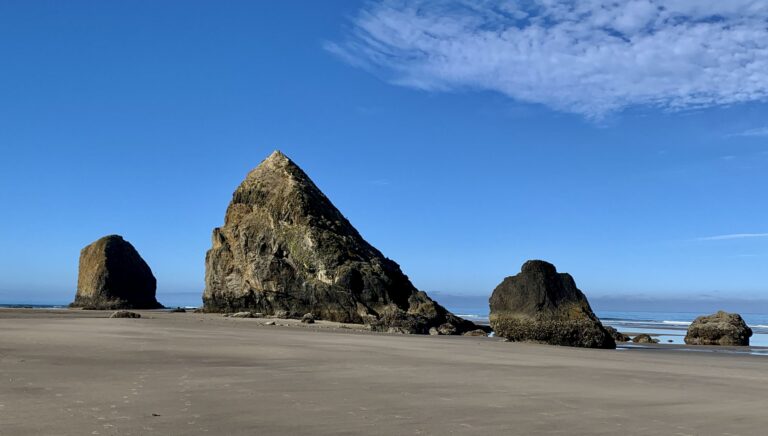
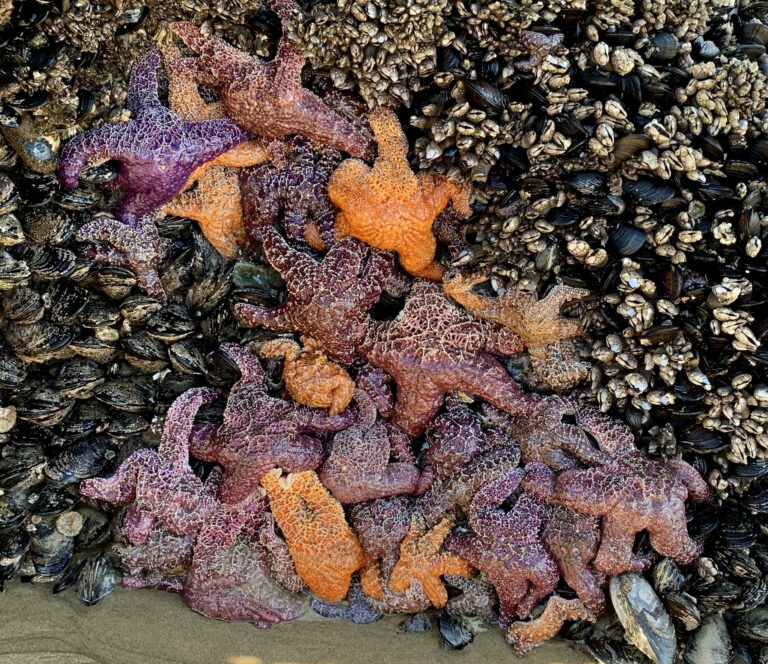
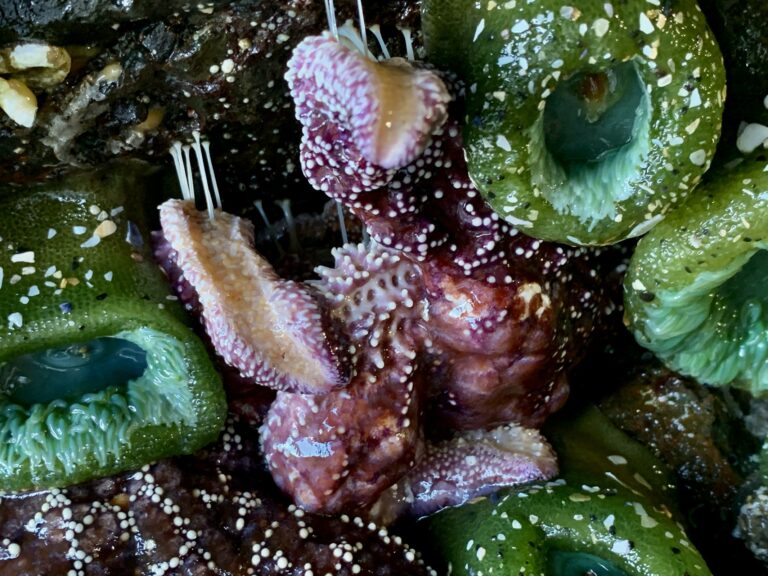
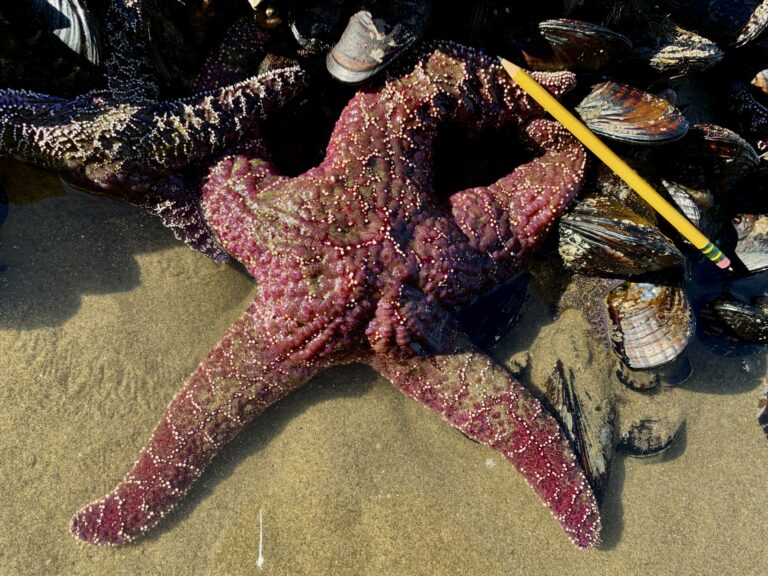
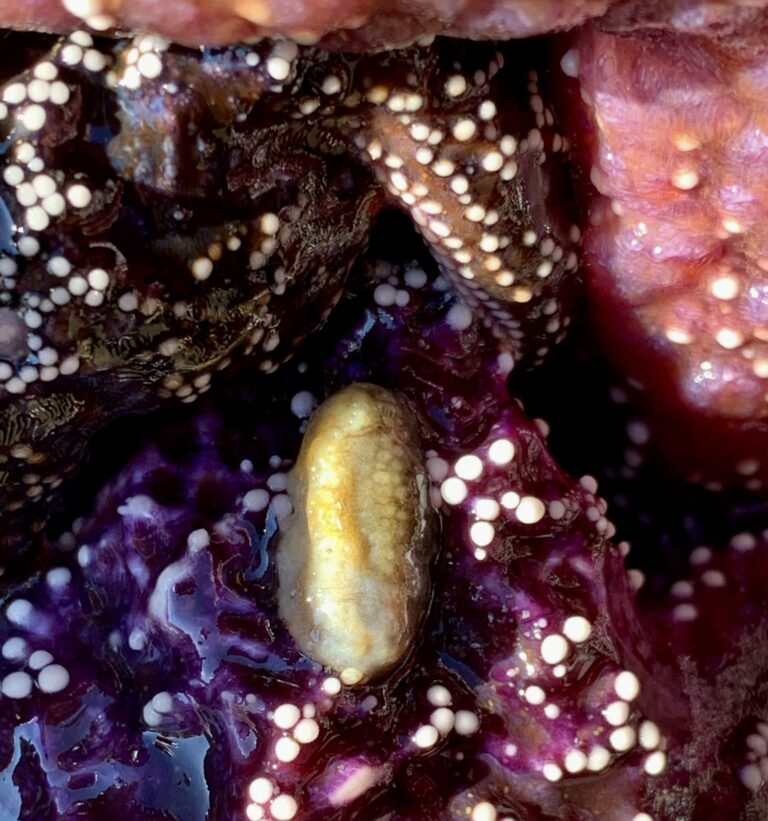
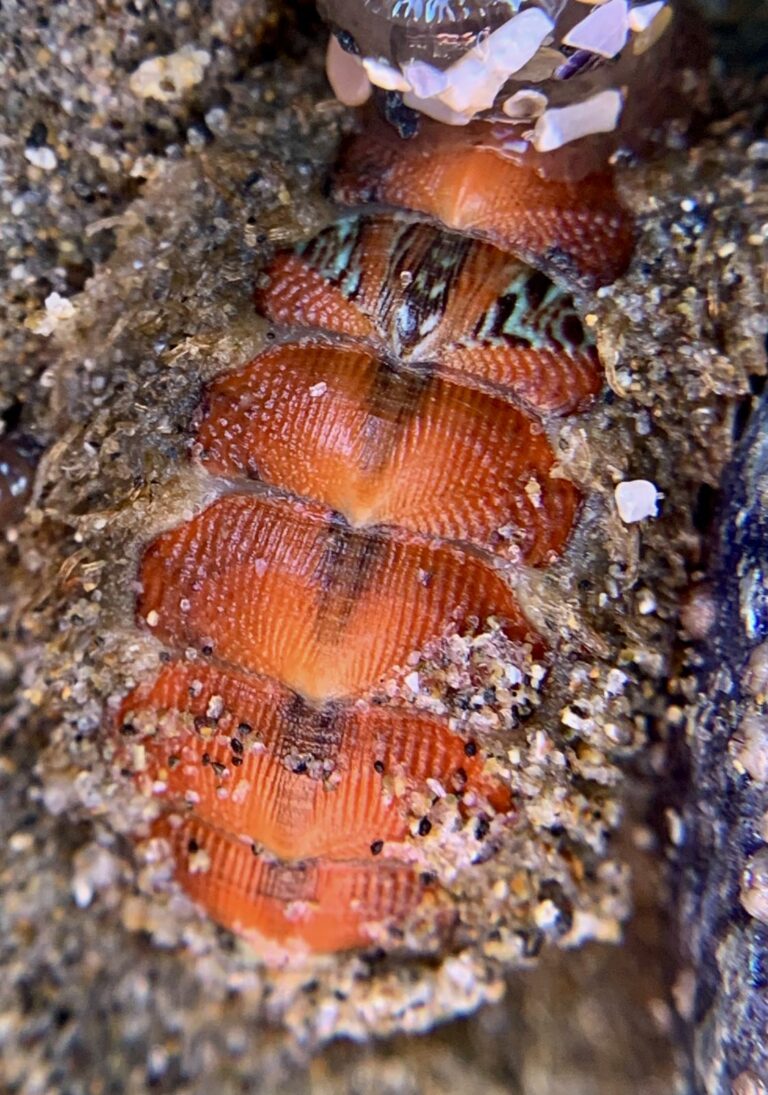
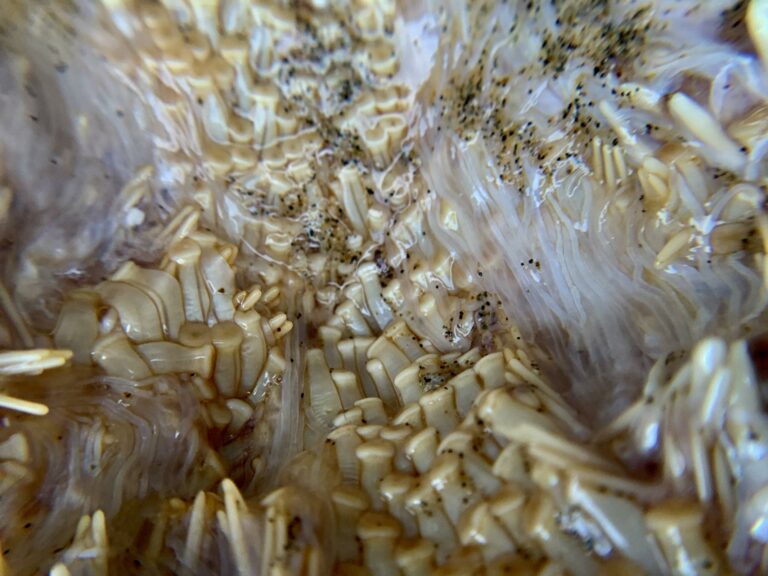
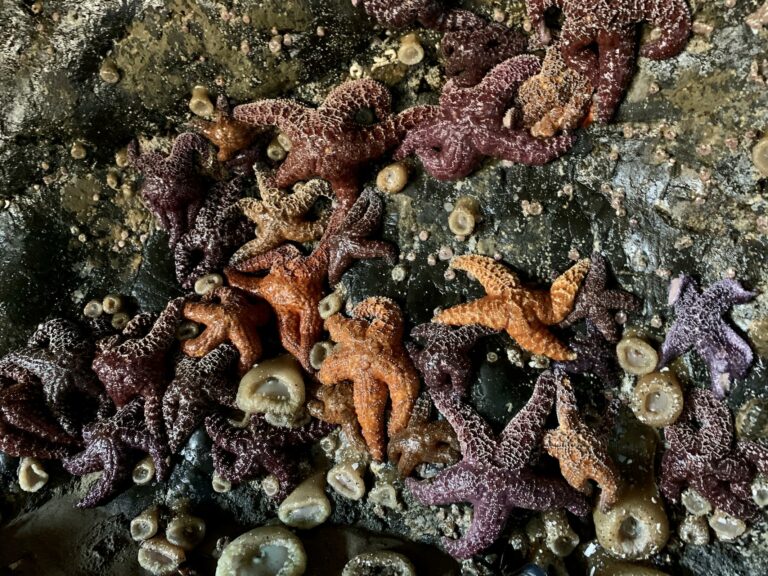
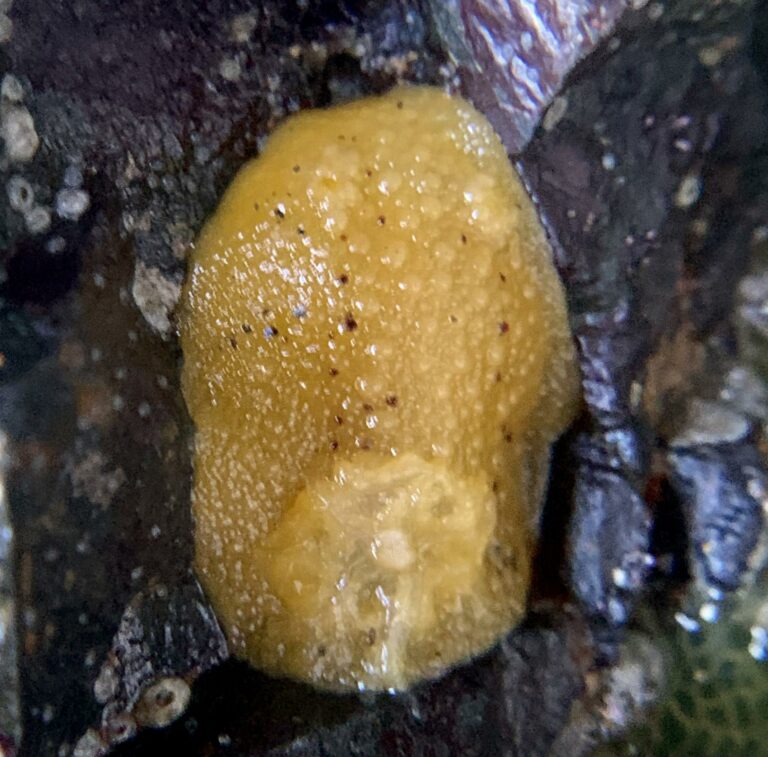
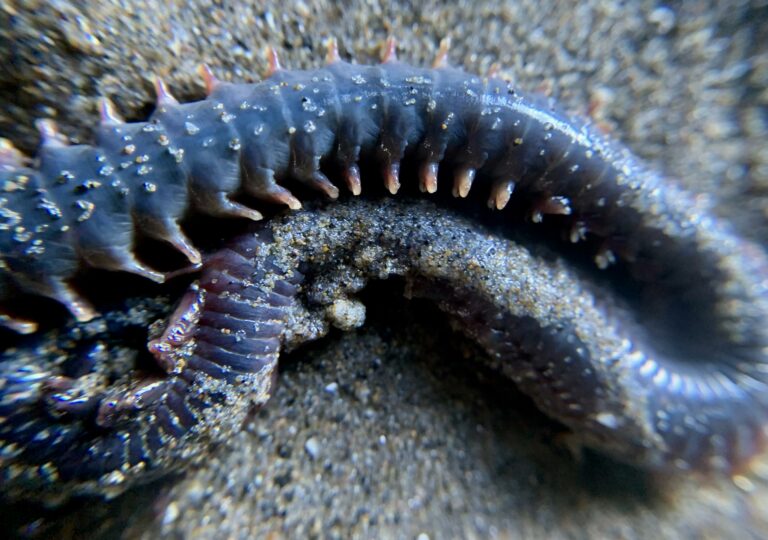
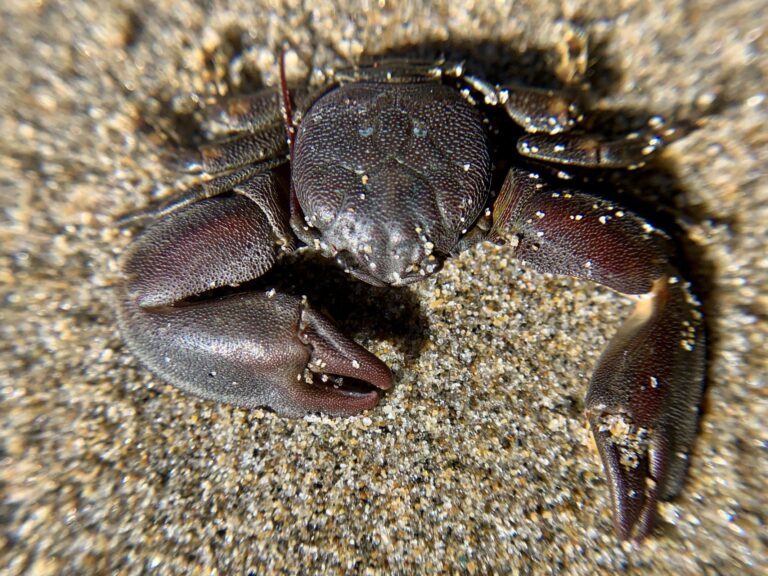

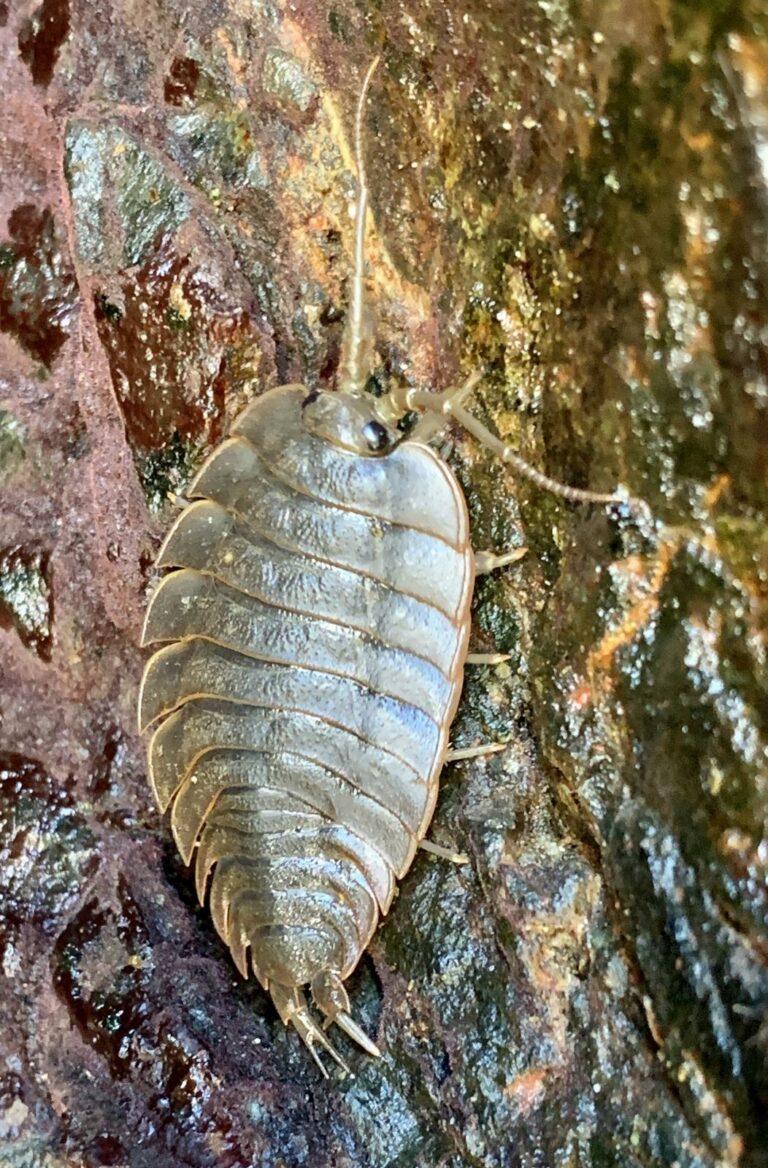
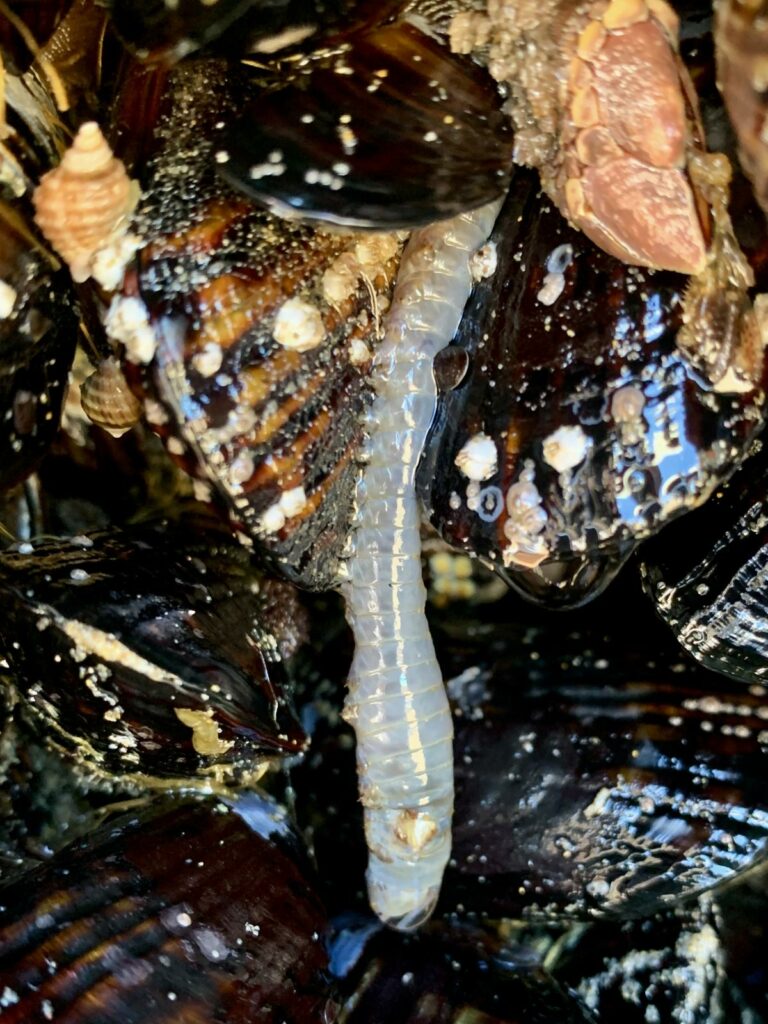

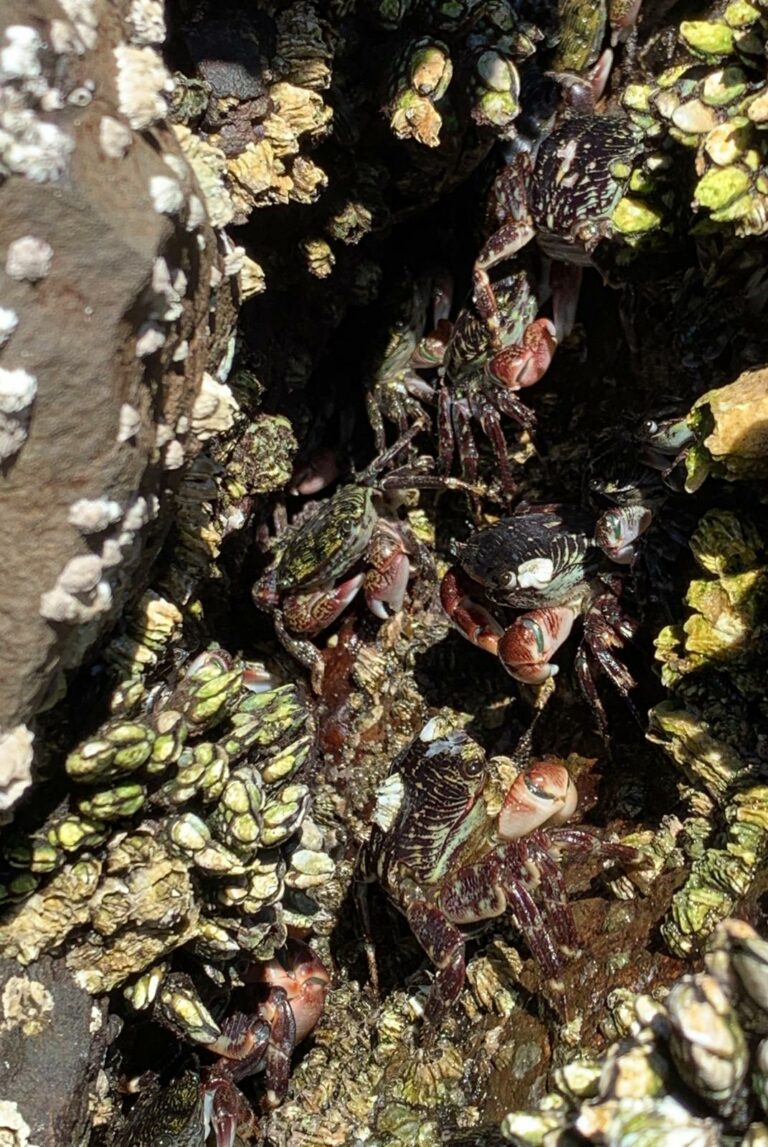
Report Images
All Mile 311 Reports
Mile 311
Jockey Cap, Silver Pt, S Cannon Beach, Tolovana Beach
A mild morning walk on mile 311 during an outgoing tide revealed 5 species of nudibranch, 3 species of anemone, and an impressive flock of 150 surfbirds that landed in the rocky outcroppings between Jockey Cap and Silver Point.
sultanym
Mile 311
Jockey Cap, Silver Pt, S Cannon Beach, Tolovana Beach
What a beautiful morning at mile 311!
browneyed
Mile 311
Jockey Cap, Silver Pt, S Cannon Beach, Tolovana Beach
Today, we observed a total of 896 Ochre sea stars (Pisaster ochraceus) at the northern rocky outcroppings exposed by the low tides at Silver Point.
sultanym
Mile 311
Jockey Cap, Silver Pt, S Cannon Beach, Tolovana Beach
Today, we observed a total of 1388 Ochre sea stars (Pisaster ochraceus) at the northern rocky outcroppings exposed by the low tides at Silver Point.
sultanym
Mile 311
Jockey Cap, Silver Pt, S Cannon Beach, Tolovana Beach
Today, we observed a whopping total of 1,059 Ochre sea stars (Pisaster ochraceus) at the northern rocky outcroppings exposed by the low tides at Silver Point.
sultanym
Mile 311
Jockey Cap, Silver Pt, S Cannon Beach, Tolovana Beach
Today, we observed 464 Ochre sea stars (Pisaster ochraceus) at the northern rocky outcroppings exposed by the low tides at Silver Point.
sultanym
Mile 311
Jockey Cap, Silver Pt, S Cannon Beach, Tolovana Beach
A morning walk on mile 311 from Tolovanna Wayside to Silver Point/Jockey Cap revealed a high relative abundance of ochre sea stars (Pisaster ochraceus) in rocky tidepools during the outgoing tide.
sultanym
Mile 311
Jockey Cap, Silver Pt, S Cannon Beach, Tolovana Beach
At 9:16am, on 3/28/2022, I was birdwatching at Silver Point, Clatsop County when I was excited to observe a light-colored, white faced, large bodied sea otter swimming north around the left most sea stack.
sultanym

